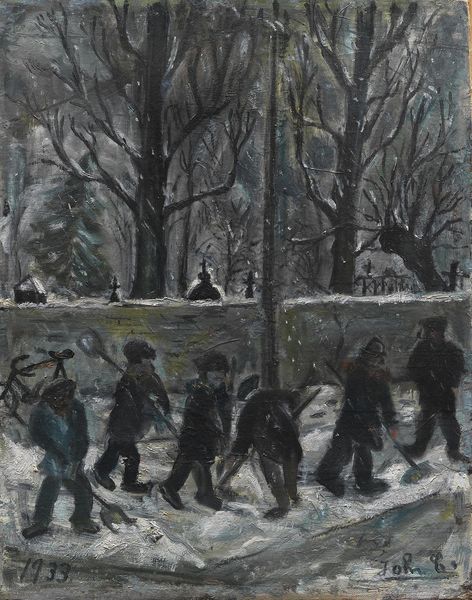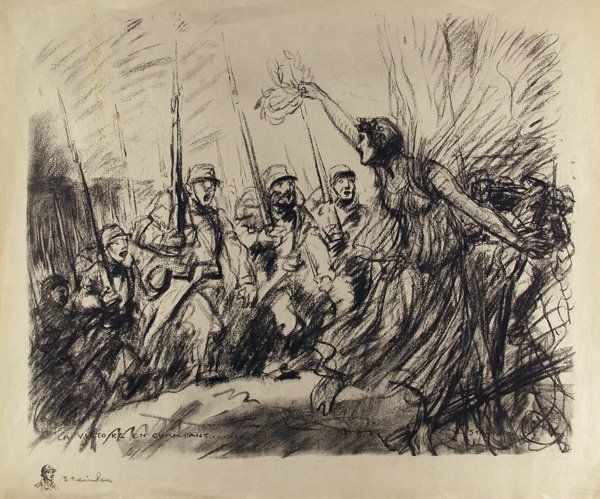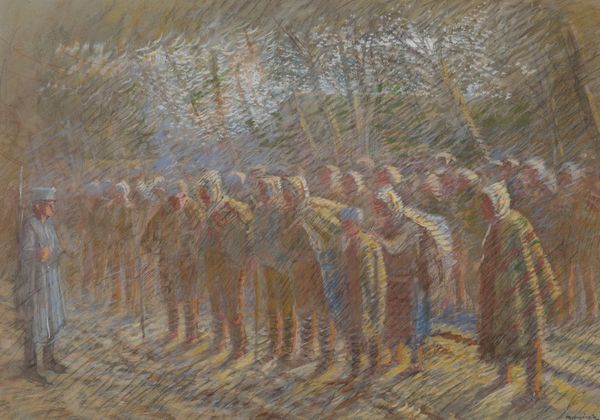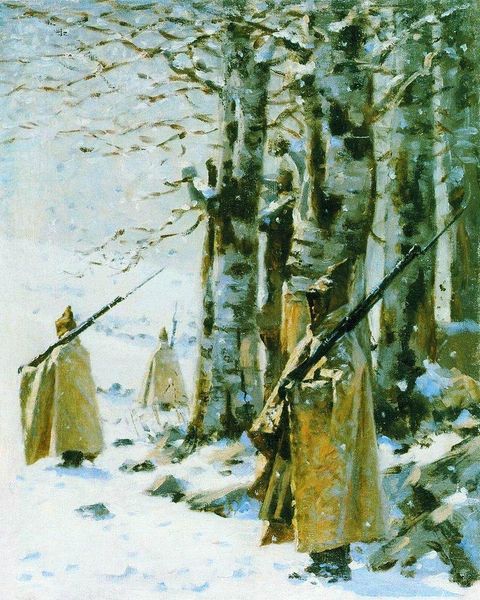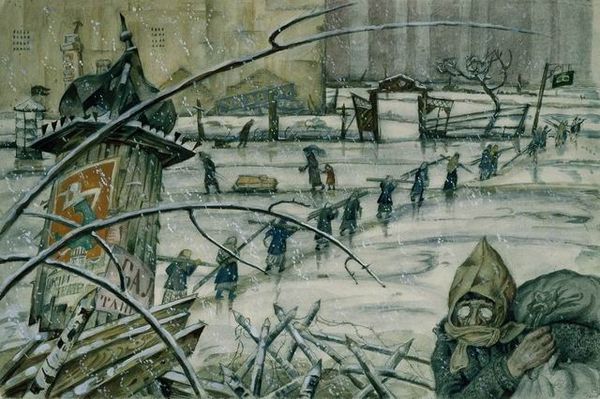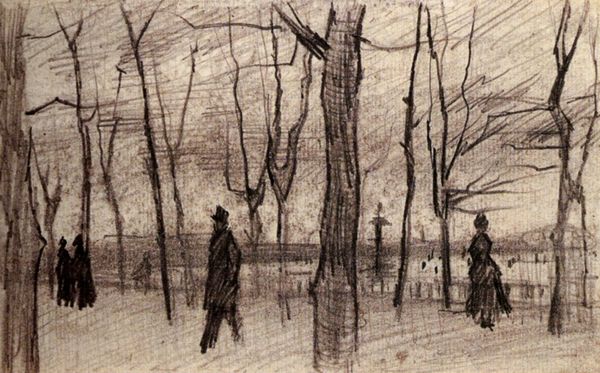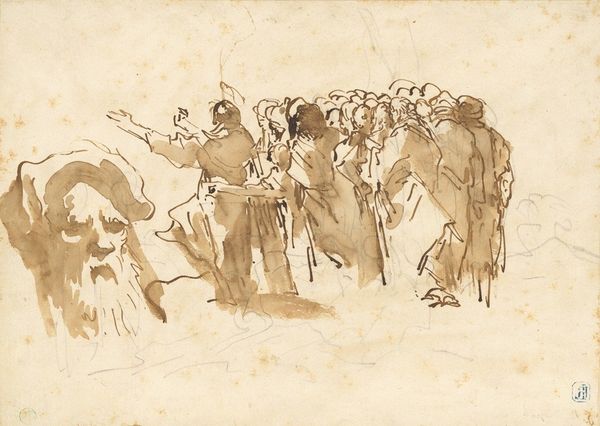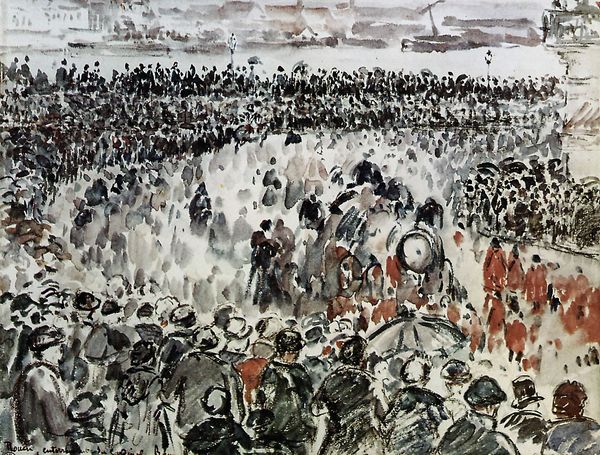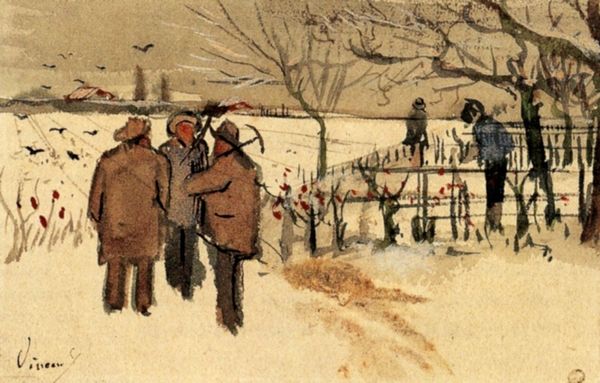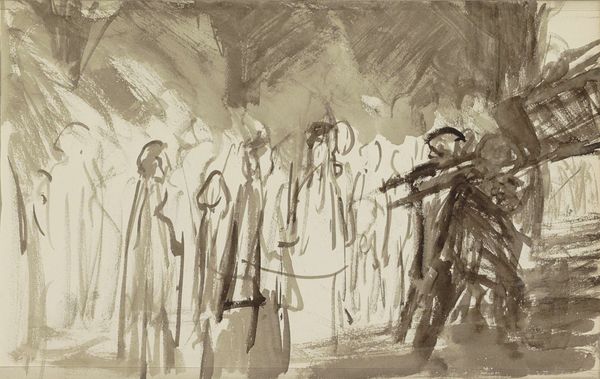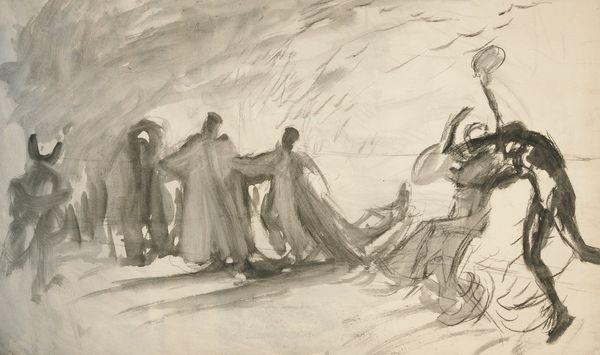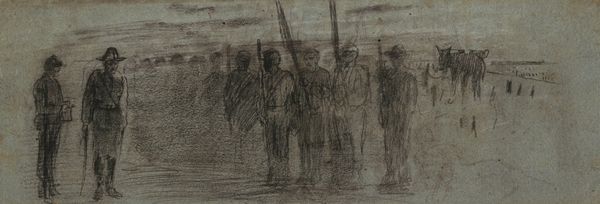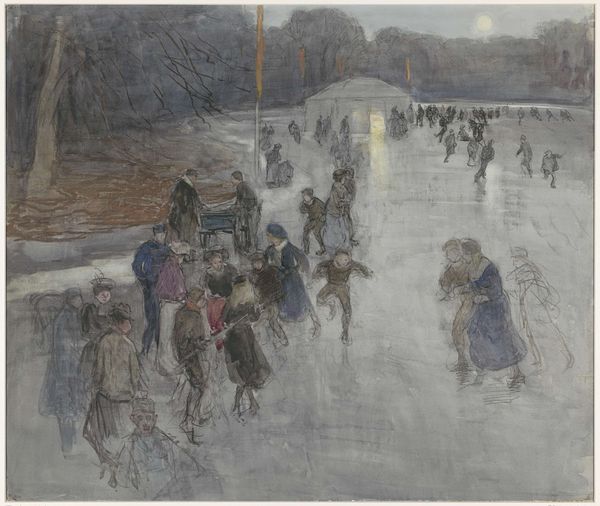
drawing, charcoal, pastel
#
drawing
#
narrative-art
#
pencil sketch
#
landscape
#
charcoal drawing
#
expressionism
#
charcoal
#
pastel
#
history-painting
Copyright: Public domain
Curator: This expressive charcoal and pastel drawing, "Prisoners Marching Off," was created in 1918 by László Mednyánszky. The piece encapsulates a poignant moment during the turbulent times of the First World War. What strikes you initially about it? Editor: There’s a profound sense of resignation emanating from this work. The somber tones and blurred lines create an atmosphere thick with weariness. The procession seems to melt into the landscape, as though even nature is mourning. Curator: It's important to recognize that Mednyánszky's work often grappled with themes of social marginalization and the suffering of war. During WWI, he worked as a war artist, witnessing firsthand the plight of soldiers and prisoners. The composition emphasizes this sense of anonymity. They could be any soldiers, from any nation—their faces obscured, their individual identities erased by the shared experience of conflict. Editor: Absolutely, and I see that anonymity echoed in the universally recognized symbol of the marching figure. Since antiquity, the act of marching—often associated with conquest or enforced labor—becomes, in Mednyánszky’s hand, a symbol of lost autonomy, a soul-crushing defeat experienced en masse. The hunched posture, the averted gazes... it's a powerful visualization of collective sorrow and lost freedom. Curator: His work provides a window into the way war reshaped societies, impacting those directly involved, as well as shaping cultural attitudes. Mednyánszky, somewhat unusually for a landscape painter, brought an interesting perspective, having seen that trauma directly as part of his engagement with war and, arguably, it had a deep impact on the evolution of modernism in art more generally. Editor: I agree, his approach evokes a deep psychological impact through very simple means. The muted colors reinforce the emotional gravity. Even the landscape feels oppressive, devoid of hope. Curator: Indeed, it reveals a shared vulnerability and hints at a complex network of support, or a lack thereof, for those displaced by war. Editor: Looking closer now, it is impressive how Mednyánszky was able to elicit such depth from a work on paper. It will certainly remain with me. Curator: For me too, Mednyánszky’s stark reminder of human cost speaks across the years with undiminished force, a compelling vision, created in extreme circumstances.
Comments
No comments
Be the first to comment and join the conversation on the ultimate creative platform.
